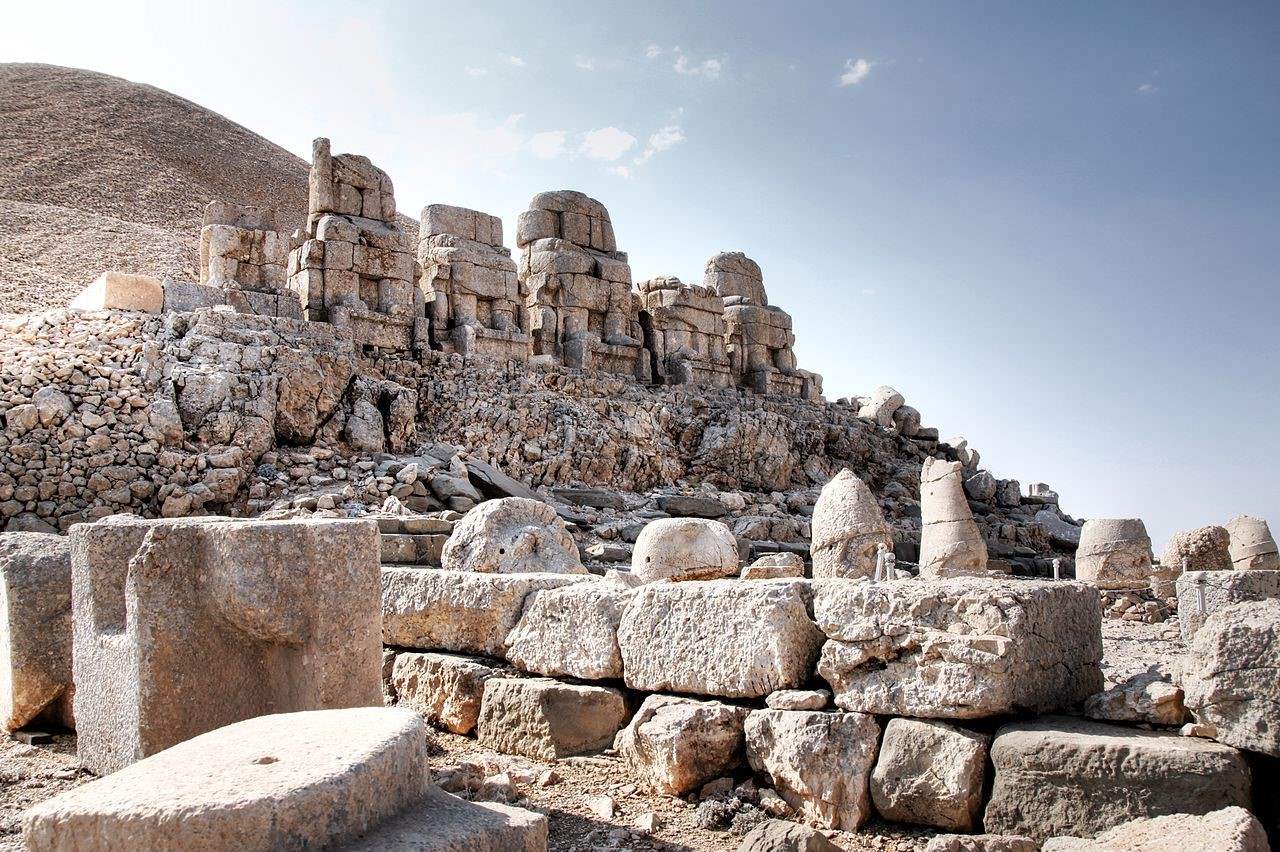
Mount Nemrut is a fascinating archaeological site in southeastern Turkey, known for its colossal statues and ancient tombs. Why is Mount Nemrut so important? This mountain holds the tomb of King Antiochus I, who ruled the Kingdom of Commagene in the 1st century BC. The site is famous for its giant stone heads, which represent gods, eagles, and lions. These statues, along with the mountain's remote location, create a mysterious and awe-inspiring atmosphere. Visitors often marvel at the engineering prowess required to transport and carve these massive figures. Mount Nemrut is not just a historical treasure; it’s a testament to human ingenuity and the desire to leave a lasting legacy.
The Majesty of Mount Nemrut
Mount Nemrut, located in southeastern Turkey, is a site of historical and archaeological significance. Known for its colossal statues and ancient tombs, this mountain attracts visitors from around the world. Here are some fascinating facts about this UNESCO World Heritage Site.
-
Mount Nemrut stands at an impressive height of 2,134 meters (7,001 feet), making it one of the highest peaks in the Eastern Taurus mountain range.
-
The site is famous for the giant statues that were erected around 62 BC by King Antiochus I Theos of Commagene. These statues represent various gods, animals, and the king himself.
-
The statues are made from limestone and measure up to 9 meters (30 feet) in height. Over time, the heads of these statues have fallen off and now lie scattered around the site.
-
King Antiochus I built this monumental complex as a tomb sanctuary for himself. He believed he was a descendant of both Greek and Persian gods, which is reflected in the statues.
-
The site was rediscovered in 1881 by a German engineer named Karl Sester. His discovery brought international attention to Mount Nemrut.
The Mysteries of the Statues
The statues at Mount Nemrut are not just impressive in size; they are also shrouded in mystery and intrigue. Each statue has its own story and significance.
-
The heads of the statues are believed to have been intentionally removed and placed on the ground. Some theories suggest this was done to protect them from earthquakes.
-
The statues include representations of Greek gods such as Zeus, Hercules, and Apollo, as well as Persian gods like Mithras. This blend of cultures highlights the syncretic nature of the Commagene Kingdom.
-
The statues are arranged in a specific order, with the gods facing east and west. This alignment is thought to have astronomical significance, possibly related to the solstices.
-
In addition to the gods, there are also statues of eagles and lions. These animals were considered sacred and symbolized power and protection.
-
The heads of the statues have unique facial features and expressions, which some scholars believe were modeled after real people from the Commagene Kingdom.
The Tomb of Antiochus I
The tomb of King Antiochus I is one of the most intriguing aspects of Mount Nemrut. Despite extensive research, many questions about the tomb remain unanswered.
-
The tomb is believed to be located beneath the massive mound of crushed rock that dominates the site. This mound is known as the tumulus and measures 50 meters (164 feet) in height and 150 meters (492 feet) in diameter.
-
Despite numerous attempts, the exact location of the tomb has never been discovered. Some archaeologists believe it may be hidden in a secret chamber within the tumulus.
-
The tumulus is made up of small, loose stones that make excavation difficult. This has led to speculation that the tomb may contain valuable treasures that have yet to be uncovered.
-
King Antiochus I left behind inscriptions detailing his achievements and his vision for the afterlife. These inscriptions provide valuable insights into the beliefs and practices of the Commagene Kingdom.
-
The inscriptions also include a list of rituals that were to be performed at the site, including sacrifices and feasts in honor of the gods and the king.
The Cultural Significance of Mount Nemrut
Mount Nemrut is not just an archaeological site; it is also a cultural landmark that holds great significance for the people of Turkey and beyond.
-
The site was designated a UNESCO World Heritage Site in 1987, recognizing its historical and cultural importance.
-
Mount Nemrut is considered one of the most important examples of Hellenistic art and architecture. The statues and reliefs showcase the artistic skills and craftsmanship of the Commagene people.
-
The site attracts thousands of visitors each year, who come to marvel at the statues and enjoy the breathtaking views from the summit.
-
Sunrise and sunset are particularly popular times to visit, as the changing light creates a dramatic effect on the statues and the surrounding landscape.
-
Local legends and folklore add to the mystique of Mount Nemrut. Some stories suggest that the mountain is haunted by the spirits of the ancient gods and kings.
The Ongoing Preservation Efforts
Preserving Mount Nemrut for future generations is a challenging but essential task. Various efforts are underway to protect and restore this historic site.
-
The Turkish government has implemented several conservation projects to stabilize the statues and prevent further deterioration.
-
Advanced technologies, such as 3D scanning and digital modeling, are being used to document the site and create detailed records of the statues and inscriptions.
-
International collaborations with archaeologists and historians from around the world are helping to uncover new information about the site and its history.
-
Educational programs and guided tours are available to visitors, providing them with a deeper understanding of the significance of Mount Nemrut.
-
Local communities are actively involved in the preservation efforts, recognizing the importance of the site for their cultural heritage and tourism industry.
The Natural Beauty of Mount Nemrut
Beyond its historical and cultural significance, Mount Nemrut is also a place of natural beauty. The mountain and its surroundings offer stunning landscapes and unique flora and fauna.
-
The summit of Mount Nemrut provides panoramic views of the surrounding valleys and mountains, making it a popular spot for photography and sightseeing.
-
The area is home to a variety of plant species, some of which are endemic to the region. These plants add to the biodiversity and ecological importance of the site.
-
Wildlife such as eagles, foxes, and wild goats can be spotted in the area, adding to the natural charm of Mount Nemrut.
Final Thoughts on Mount Nemrut
Mount Nemrut stands as a testament to ancient ingenuity and ambition. Its colossal statues and intricate carvings tell stories of a bygone era, offering a glimpse into the past. This UNESCO World Heritage site, perched high in Turkey's Eastern Taurus mountain range, continues to captivate historians and travelers alike. The blend of Greek, Persian, and Armenian influences showcases a unique cultural fusion. Visiting Mount Nemrut not only provides a historical journey but also a breathtaking view of the surrounding landscape. Whether you're a history buff or just someone who appreciates natural beauty, this site has something for everyone. So, next time you're planning an adventure, consider adding Mount Nemrut to your list. Its mysteries and marvels are waiting to be explored.
Was this page helpful?
Our commitment to delivering trustworthy and engaging content is at the heart of what we do. Each fact on our site is contributed by real users like you, bringing a wealth of diverse insights and information. To ensure the highest standards of accuracy and reliability, our dedicated editors meticulously review each submission. This process guarantees that the facts we share are not only fascinating but also credible. Trust in our commitment to quality and authenticity as you explore and learn with us.


